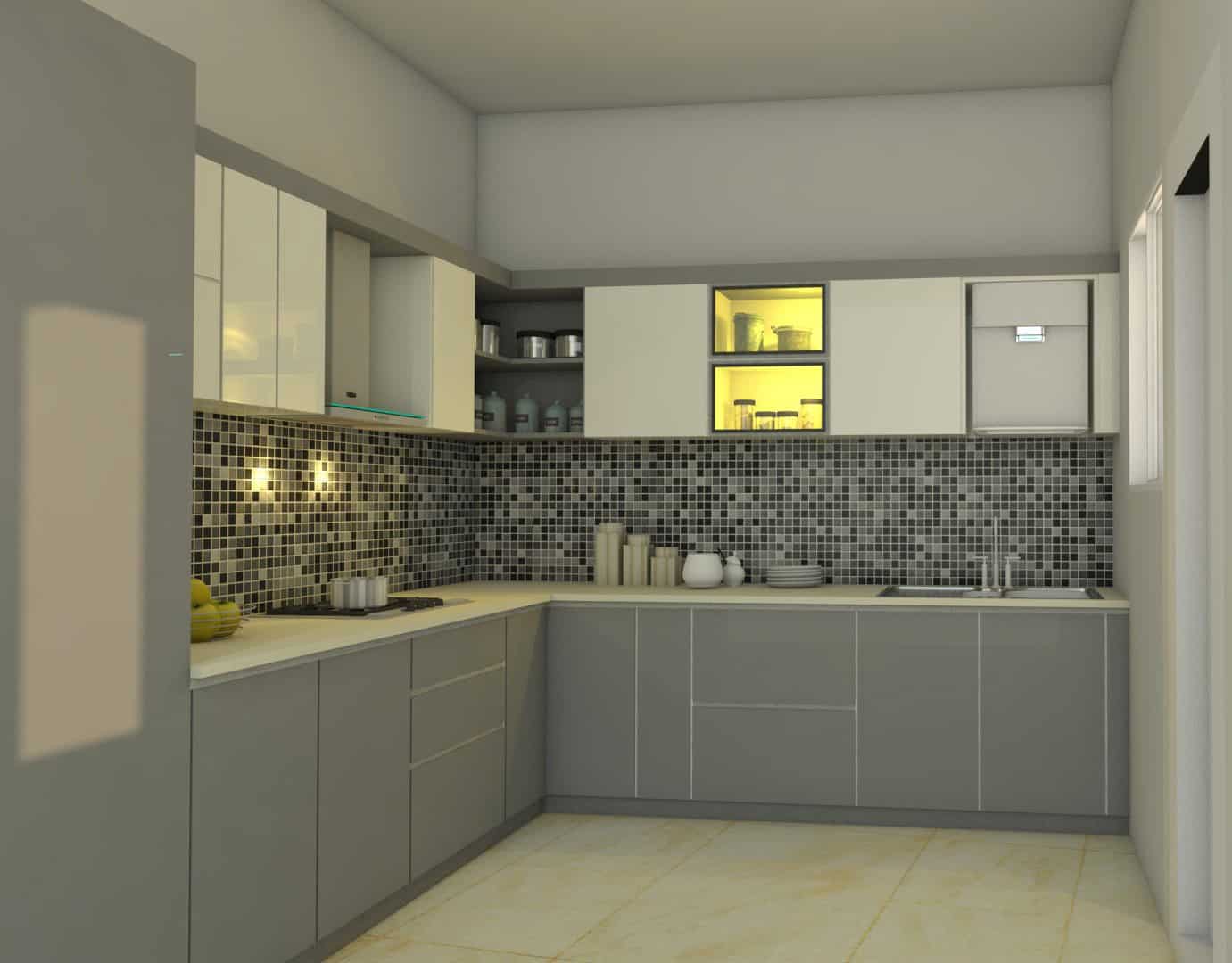Modular kitchen interior design involves creating a functional and aesthetically pleasing kitchen space using pre-built, standardized components or modules. Here's a concise overview of modular kitchen interior design:
-
Layout Planning:
- Assess the available space and determine an efficient kitchen layout, such as L-shaped, U-shaped, or parallel layouts.
- Plan for the placement of appliances, cabinets, and workspaces to optimize functionality.
-
Modular Cabinets and Storage:
- Utilize modular kitchen cabinets that come in standardized sizes and designs.
- Incorporate pull-out shelves, drawers, and organizers for efficient storage solutions.
-
Countertops and Workspaces:
- Select durable and easy-to-maintain materials for countertops, such as granite, quartz, or laminate.
- Ensure ample counter space for food preparation and other kitchen activities.
-
Appliance Integration:
- Integrate modular kitchen appliances seamlessly into the design, ensuring a cohesive and streamlined look.
- Consider built-in ovens, microwaves, and dishwashers for a modern appearance.
-
Modular Kitchen Islands:
- Introduce a modular kitchen island if space allows, providing additional workspace and storage.
- The island can also serve as a dining or casual seating area.
-
Color and Material Palette:
- Choose a cohesive color scheme and material palette for a unified and harmonious look.
- Consider the overall style, such as contemporary, traditional, or minimalist, and select materials accordingly.
-
Lighting Design:
- Implement a well-thought-out lighting plan with a combination of ambient, task, and accent lighting.
- Consider pendant lights, under-cabinet lighting, and recessed lighting for various purposes.
-
Ventilation and Safety:
- Install effective kitchen ventilation to maintain a comfortable and odor-free environment.
- Ensure safety features, such as fire-resistant materials and childproofing measures.
-
Flooring:
- Choose durable and easy-to-clean flooring materials, such as tiles or vinyl, suitable for a kitchen environment.
-
Personalization and Accessories:
- Add personalized touches through decorative elements like backsplash tiles, wall art, or open shelving.
- Incorporate modular accessories such as pull-out trash bins, spice racks, and cutting boards for added convenience.
-
Technology Integration:
- Consider integrating smart home technology for added convenience, such as smart appliances, lighting, and temperature control.
-
Professional Installation:
- Engage professional installers to ensure accurate assembly and installation of modular components.
Modular kitchen interior design allows for flexibility, efficient use of space, and customization according to individual preferences. It is a popular choice for contemporary homes due to its modern aesthetics and practicality.
